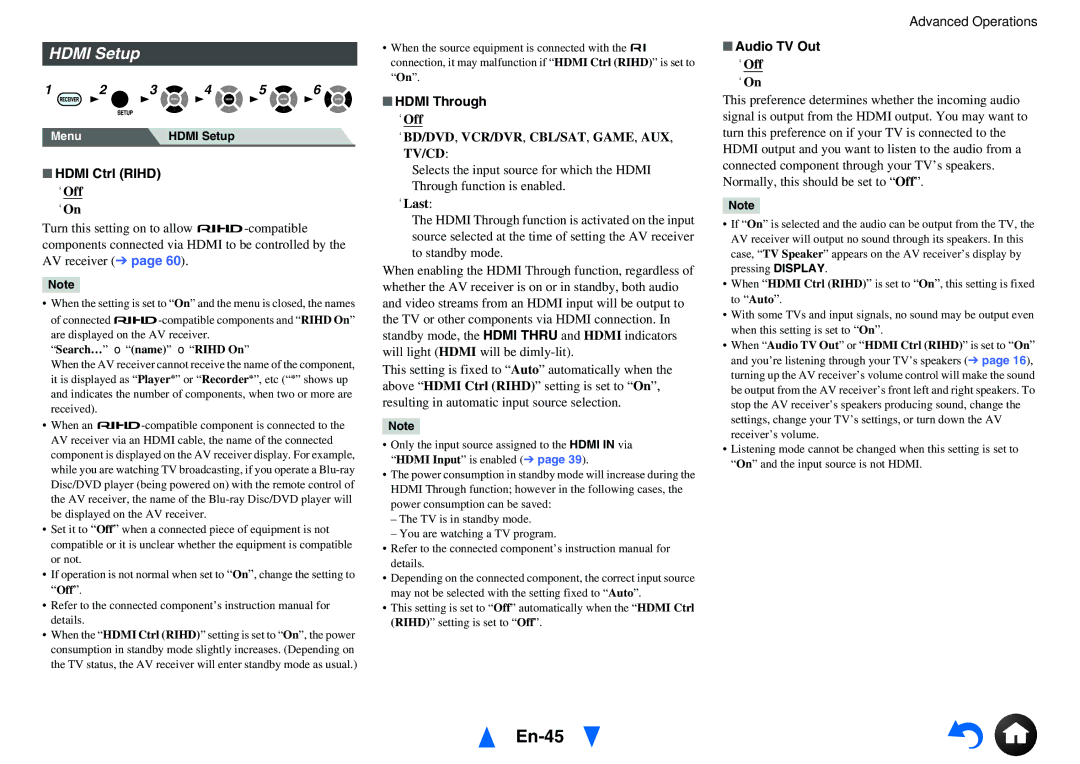HT-R391, HTS3500 specifications
The Onkyo HTS3500 and HT-R391 are two standout products in the world of home theater systems, designed to elevate your audio and visual experience right in the comfort of your living room. Both models showcase Onkyo's commitment to delivering high-quality sound and an array of features that cater to music and movie lovers alike.The Onkyo HTS3500 is a 5.1 channel home theater system, combining an AV receiver with powerful speakers to create an immersive audio environment. It supports Dolby TrueHD and DTS-HD Master Audio, ensuring that you hear every detail with cinematic clarity. The system comes equipped with six HDMI inputs, allowing for easy connectivity with various devices such as gaming consoles, Blu-ray players, and streaming devices. One notable feature is the streamlined installation process, aided by Onkyo's AccuEQ technology. This room calibration feature adjusts the sound settings based on your room's acoustics, ensuring optimal sound quality tailored to your environment.
On the other hand, the HT-R391 is a more compact 5.1 channel receiver which maintains many of the critical attributes of its bigger counterpart. It is praised for its power output and versatility, making it an ideal choice for those who have limited space but still desire a rich auditory performance. The HT-R391 provides a solid 70 watts per channel, creating robust sound for movies, music, and games. It also supports various audio formats, including MP3, WMA, and FLAC, so you can enjoy your digital music in high fidelity.
Both systems feature built-in Bluetooth, allowing seamless streaming from smartphones and tablets. The user-friendly remote control enhances the overall experience, enabling quick and easy access to various inputs and settings without hassle. The overall design is sleek and modern, ensuring that these systems will fit nicely in any home decor.
In conclusion, the Onkyo HTS3500 and HT-R391 are excellent choices for anyone seeking high-quality home theater experiences. With advanced audio technologies, ease of use, and stylish aesthetic, these systems significantly enhance your entertainment experience, making them worthy additions to any home cinema setup. Whether you're watching your favorite films or enjoying music, Onkyo's commitment to excellence shines through in these remarkable products.

